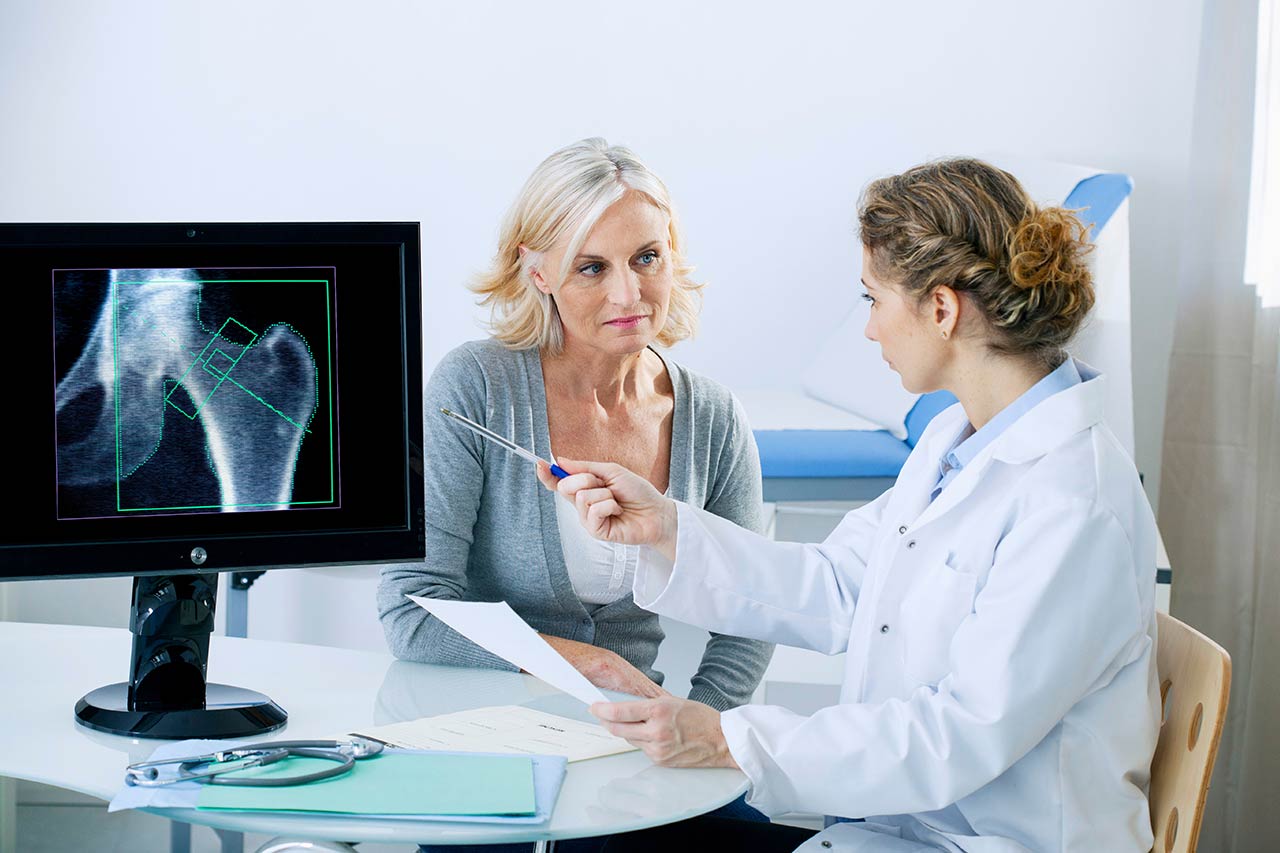Osteoporosis in women: 5 factors which could help improving treatment

Osteoporosis can occur in women who have reached menopause. If the loss of bone density, caused by the drop of estrogen levels occurs quickly, or the bone density was low to begin with, the chances of developing osteoporosis grow. About 70% of Caucasian and Asian American women above the age of 50 are estimated to have low bone mass or even osteoporosis, which makes them the most affected ethnic group. On the occasion of the World Osteoporosis Day (on October 20th), the Alcimed Healthcare team shares with you five factors which could help prevent osteoporosis or improve treatment of osteoporosis, especially in women.
Osteoporosis in women: which constat in 2021?
A study conducted in 2015 ((International Osteoporosis Foundation) estimates that a total of 16 million women and four million men above the age of 50 in six European countries alone have osteoporosis, each living with the risk of suffering from fragility fractures. The rise of osteoporosis and the resulting fractures cause a decrease in quality of life and heighten the disability-adjusted life span of patients.
Women specifically suffer more due to a treatment gap, causing 60% to 85% of women to not receive treatment following osteoporotic fractures.
The cost for health systems caused by fragility fractures for the six EU countries in 2015 was of €37.5 billion, exceeding those of many other chronic diseases. There is an urgent need to more rapidly diagnose osteoporosis and to prioritise fragility fractures. With a progressively ageing population there will be increase in related costs, reaching an estimated €47.4 billion a year by 2030.
1. Performing early testing for osteoporosis in women
Prophylactic bone mineral density (BMD) measurement is currently not widely spread due to limited availability of densitometers, restrictions in personnel permitted to perform scans, low awareness of usefulness of BMD testing and limited or non-existent reimbursement.
This delays a diagnosis or it is only completed after the first fracture. If patients are older than 65 or match for osteoporosis risk factors, such as long-term use of steroids, a family history of the disease, etc. they should advise them to do a bone density test.
You can check your risk for osteoporosis yourself with the tool created by the International Osteoporosis Foundation (available in 36 languages).
2. Increasing awareness of osteoporosis among women
The strategy of raising awareness in doctors and patients can speed up the diagnosis and could also help prevent osteoporosis. People below the age of 50 can already work against rapid bone density loss. For instance, despite vitamin D being essential for healthy bones, according to a study commissioned by the Royal Osteoporosis Society only half of people in the UK know that it has an impact on their bone health and 43% have never thought about how to keep their bones healthy. Raising awareness of bone health should start at a young age to set people off for healthier lives.
3. Spreading the use of nutrition and supplements to fight osteoporosis
Beyond vitamin D, foods which are rich in calcium and other minerals are essential for bone health. Some nutrients are difficult to get through food alone, such as vitamin D. Small amounts of it can be found in some food but synthesis via sunlight is vital.
Supplements can also be a useful way to top up on nutrients which are essential to maintain healthy bones and reduce the risk for osteoporosis. Some foods or beverages such as alcohol and drinks containing caffeine should be consumed in moderation because they may decrease calcium absorption.
Read more : Healthy ageing and opportunities in the nutrition segment
4. Fostering exercising
A recently published long term study assessed the impact of continued strength and sprint training on bone ageing in 40- to 85-year old males. It was discovered that this kind of training helps to maintain or even improve bone health of the tibial. Although this study was conducted on male sprinters, these results are also very relevant for women and suggests that regular, intensive exercise counteracts bone aging and reduces the risk of osteoporosis. However, it is important to stress that with age the training intensity declines, recovery takes longer, and athletes should be careful with injuries or other progressive diseases. Thus, the researchers stress that “exercises targeted at improving muscle force–generating capacity are highly recommended at all ages” (and genders).
5. Developing new treatments for osteoporosis
There are currently several medications available to treat osteoporosis. Simply put, these include medications that either block the breakdown of bone (anti-resorptive therapies) or enhance the formation of bone (anabolic therapies). Promising medicines have been developed in the past years and new drugs are currently in development. One therapeutic difficulty which is currently being researched on is to find a technology which can effectively administer calcitonin. Calcitonin is an essential hormone for calcium metabolism which contributes to our bone health.
Osteoporosis does not only occur in women, but they are four times more often affected by the disease. With an increase of osteoporosis worldwide this topic needs to be tackled in a way beyond improving diagnosis and finding better treatments. Increasing awareness of the disease and of factors that influence bone health from a young age is essential. Only then will we be able to improve patients health and stop the disease from uncontrollably increasing costs for health systems.
About the author,
Daphne, Consultant in Alcimed’s Healthcare team in Germany
Do you have an exploration project?
Our explorers are ready to discuss it with you